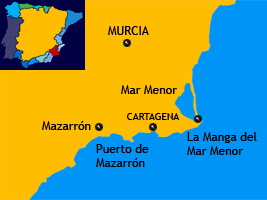Overview Costa Cálida, located in the southeastern part of Spain, is within the Region of Murcia. This stunning coastal area is celebrated for its warm climate, breathtaking landscapes, and rich historical heritage. With a Mediterranean semi-arid subtropical climate, Costa Cálida experiences hot summers and mild winters, making it an ideal destination for both tourists and residents.
Location
Climate
History
Landscape
Active Tourism
Costa Cálida is a region that combines natural beauty, a favorable climate, rich history, and a wide range of activities, making it an attractive destination for various interests.
